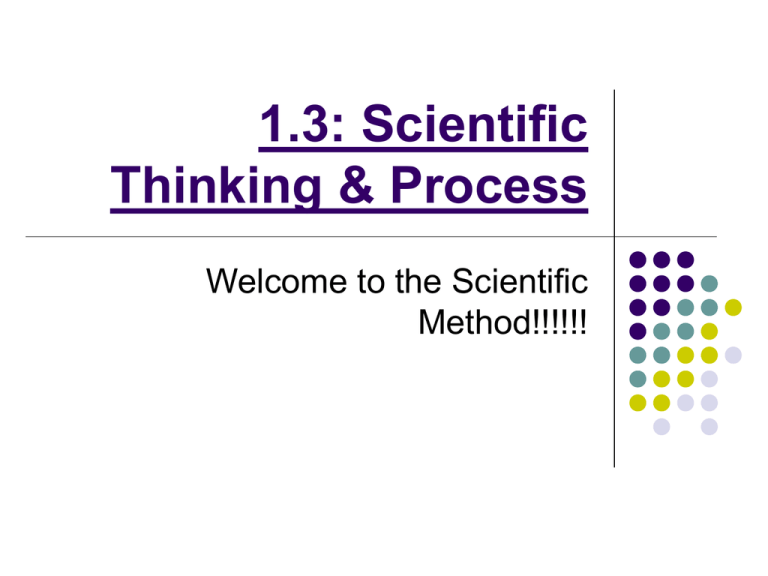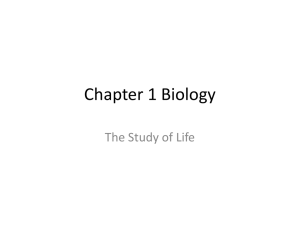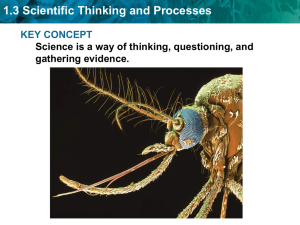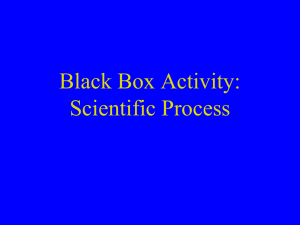Scientific Thinking & Process: Scientific Method Explained
advertisement

1.3: Scientific Thinking & Process Welcome to the Scientific Method!!!!!! 1.3: Scientific Thinking & Process One of my favorite things to do when I have lots of spare time is bake cookies and cakes. I’ve been having a problem lately- nothing seems to turn out right. What should be my first step in solving this problem? A. Try baking cookies more often, and bring them to class. B. Figure out if something is wrong with the oven or kitchen timer C. Nothing. You aren’t a pastry chef, Miss Walsh. 1.3: Scientific Thinking & Process The fact of the matter is, we all use some or parts of the scientific method in our daily lives to solve problems. The only difference between scientists and us is scientists are researching problems, and we’re trying to figure out what’s wrong with our ovens!!! Remember that no matter what branch of science (physics, biology, chemistry), scientists are going to use the same method to solve problems and conduct research. 1.3: Scientific Thinking & Process Biology is a process of inquiry that uses critical and logical thinking to find answers to questions. Scientific inquiry also requires evidence- just like in a court of law. 1.3: Scientific Thinking & Process The following are the steps to the scientific method: I. Observations, data, and hypotheses 1. a. b. c. Scientific inquiry starts with observations; this includes actually observing the subject, or examining data from past experiments. Observations can also be recorded as data . There are 2 kinds of data: qualitative (sight, sound, smell) or quantitative (how much, temperature, etc.) Hypothesis: a proposed answer for scientific questions. It must be specific and testable. 1.3: Scientific Thinking & Process Testing hypotheses 2. a. b. Scientists test the hypothesis several timesbiological data can be highly variable. By repeating tests, scientists can be certain their results are “chance happenings.” After testing the hypothesis several times, scientists analyze the data. They use statistics, and there are two outcomes from statistical analysis: i. Nonsignificant: the effect was so small it could have happened by chance ii. Statistically significant: the data show an effect that is not likely due to chance. 1.3: Scientific Thinking & Process Conducting Experiments II. 1. 2. 3. 4. In experiments, scientists study factors called independent variables and dependent variables to find cause and effect relationships The independent variable is the one manipulated in the experiment The dependent variable is the one that is affected by the independent variable; dependent variables are measured during an experiment to determine the impact of the independent variable Ideally, only one variable should change at a time- all else should remain constant. 1.3: Scientific Thinking & Process What is a theory? III. Remember this: a hypothesis is a proposed answer for a scientific question A THEORY is a proposed explanation for a wide range of observations and experimental results supported by a wide range of evidence. Theories are not easily accepted in scienceand as a rule, they are never proven. They are always subject to change or may be disproven. 1. 2. 3. a. Examples: theory of evolution, theory of disease 1.3: Scientific Thinking & Process On a new sheet of paper, please write your name, date and period. Please label the assignment: 1.3 questions, page 17, #1, 2, 5. Write in complete sentences, you do not have to write the questions 1.3: Scientific Thinking & Process











